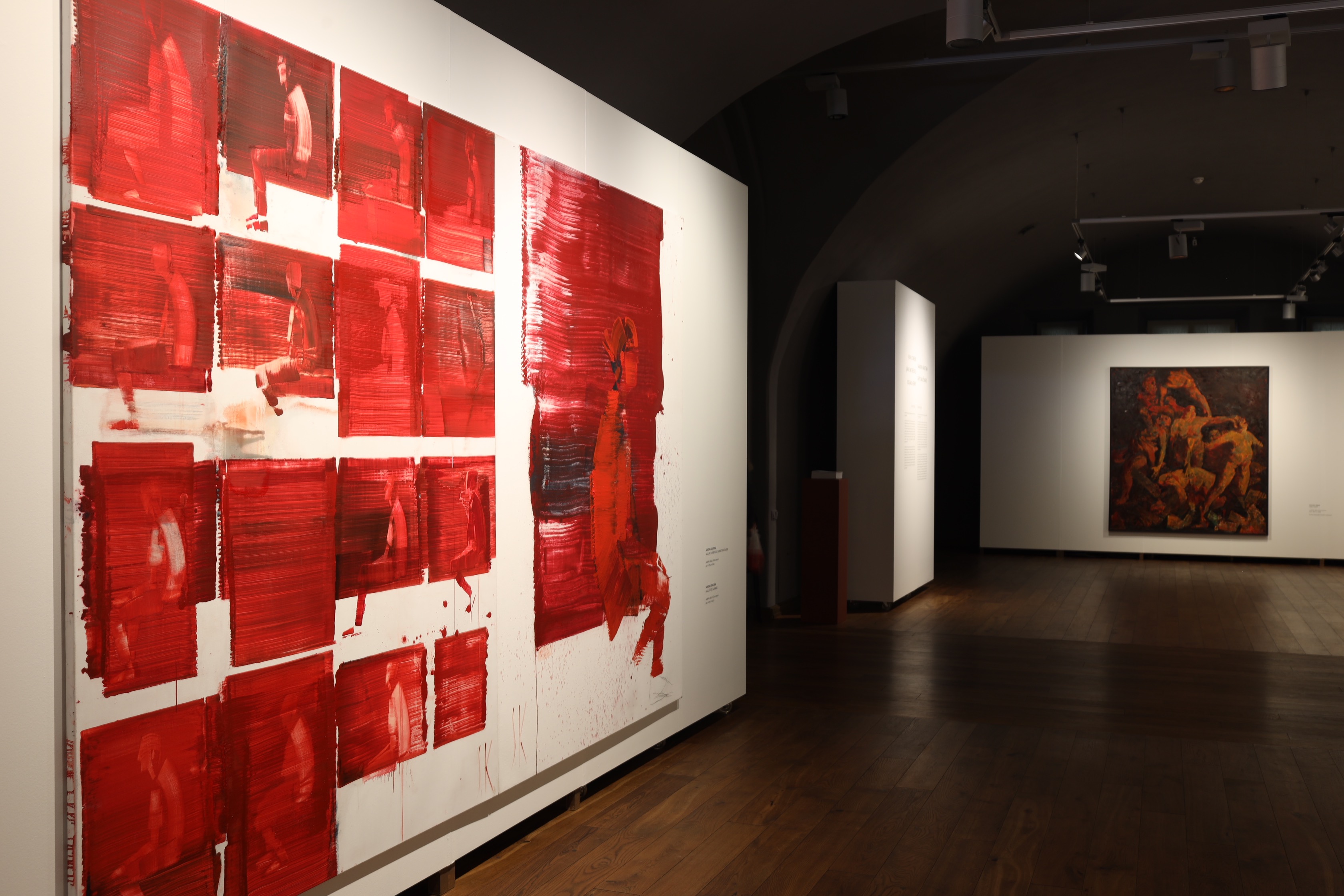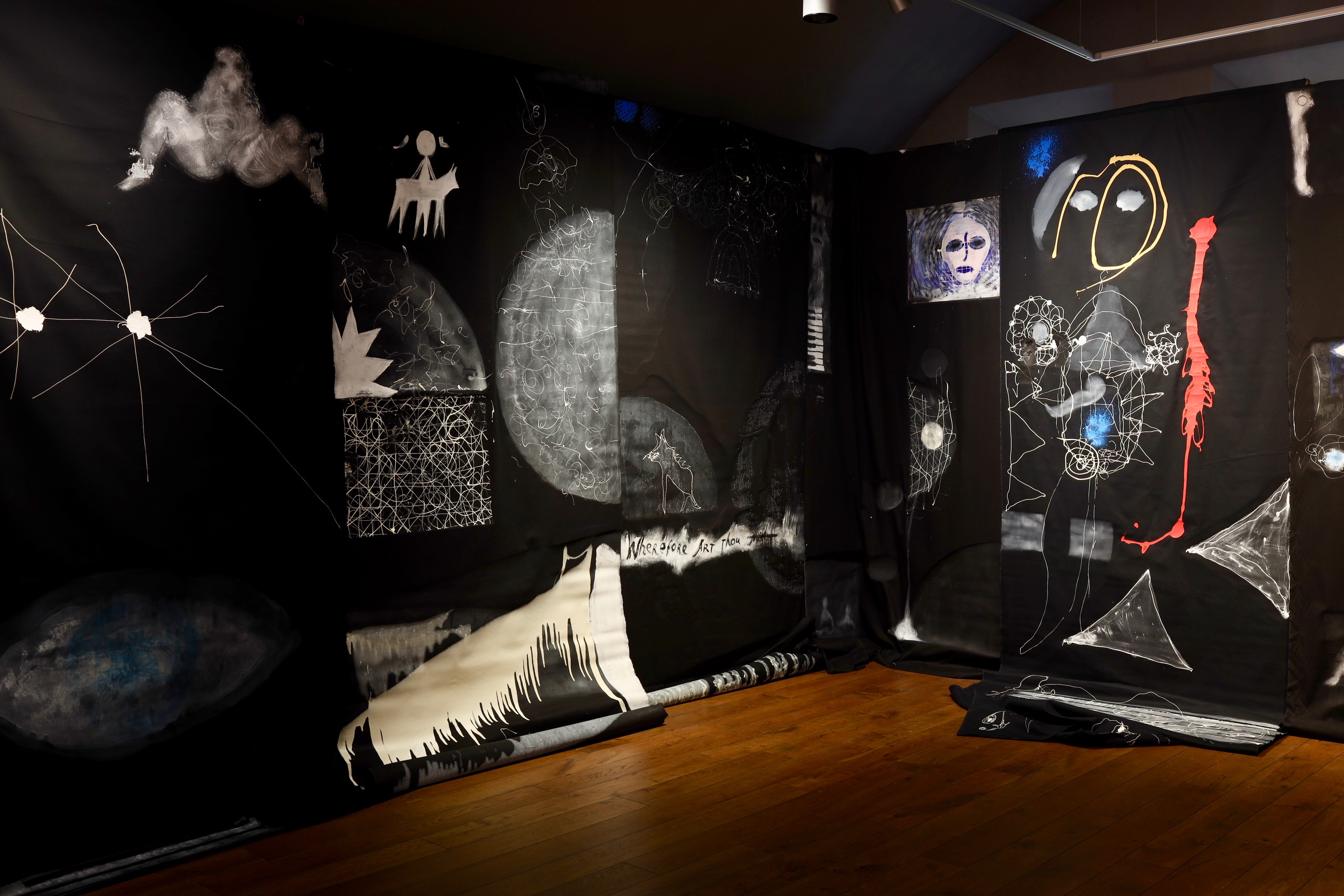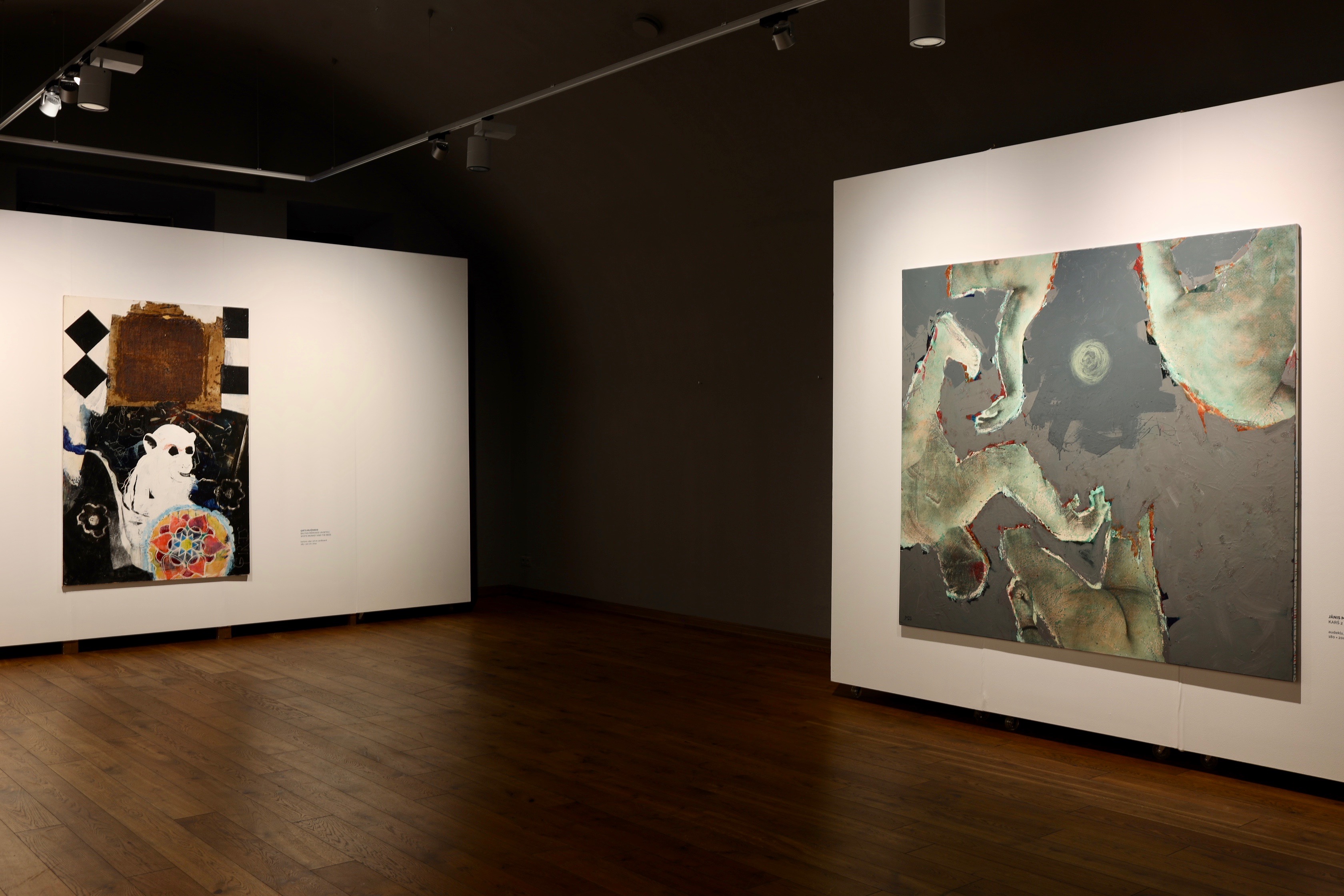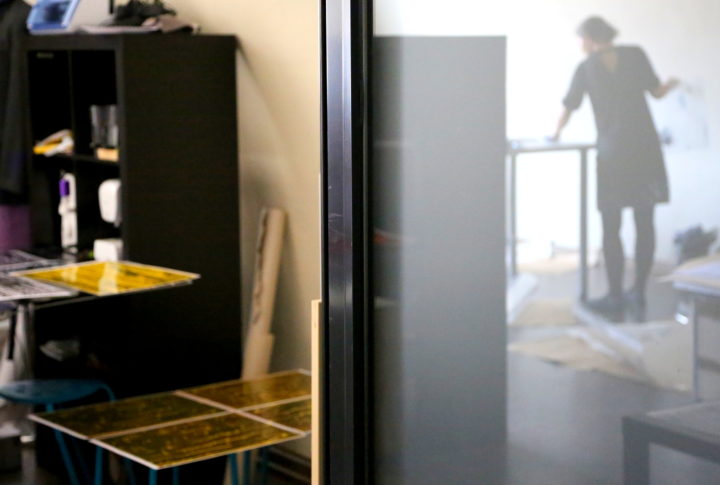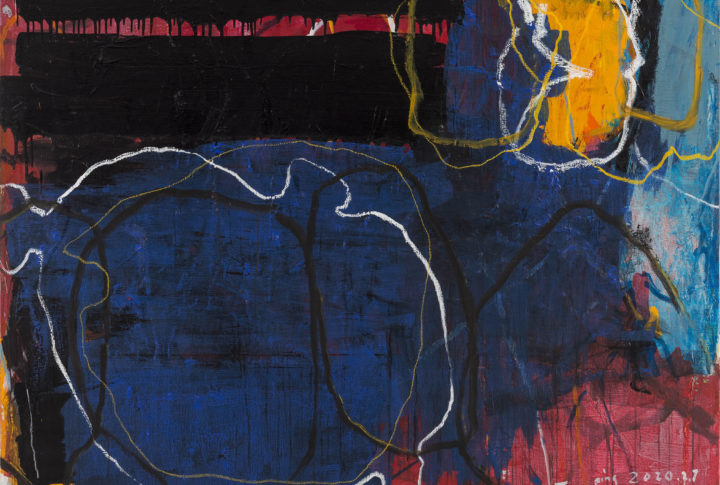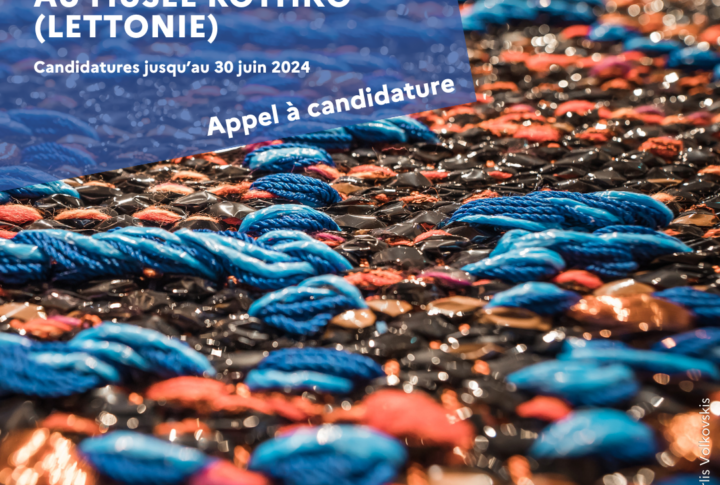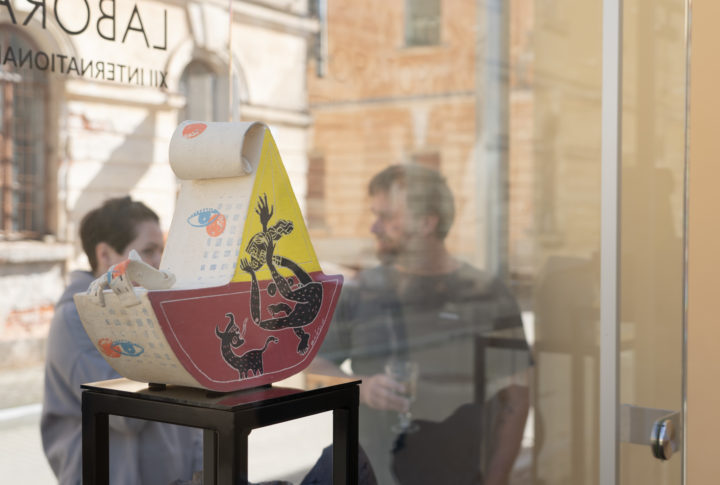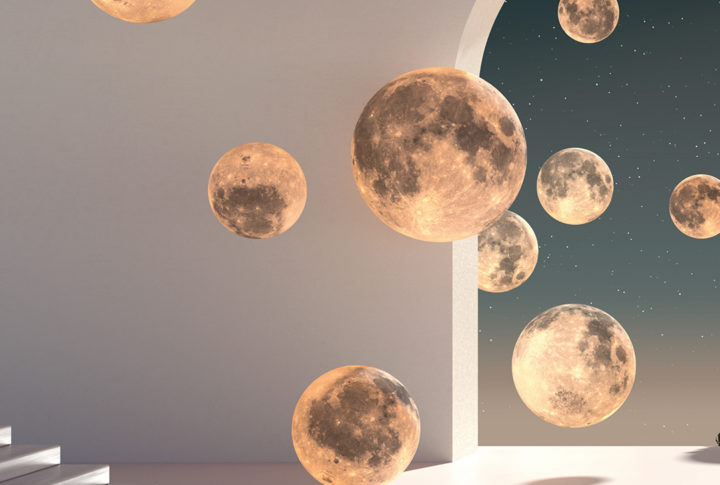FLUCTUATIONS
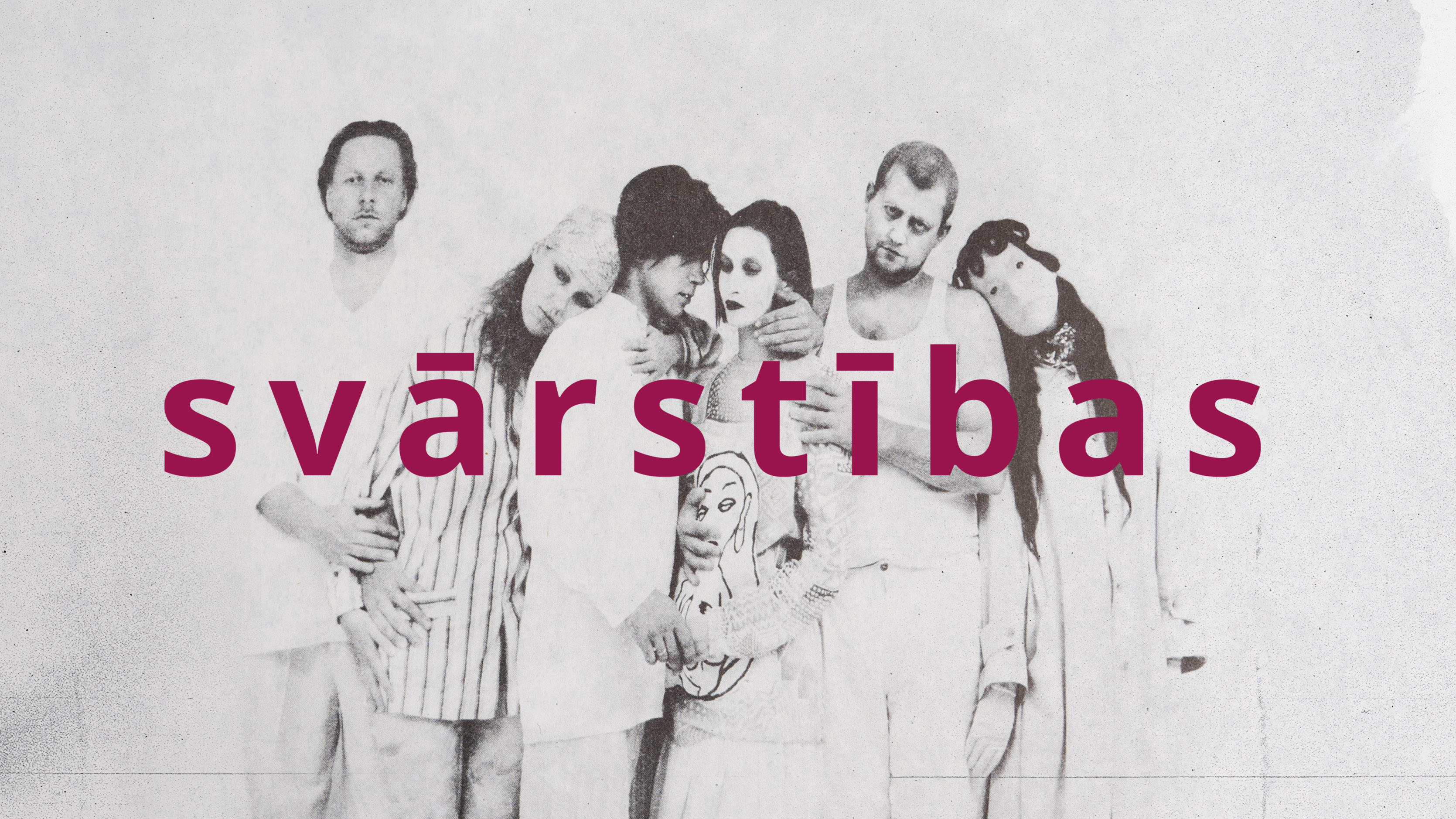
Ieva Iltnere, Sandra Krastiņa, Jānis Mitrēvics, Ģirts Muižnieks, Edgars Vērpe
Where has the gentleness gone?
Sandra Krastiņa
“Rīga is thundering with footsteps, smouldering with internal and alien contradictions, troops are marching, people are bickering over God knows what, but the Latvia Exhibition Hall has just become the venue for Gentle Fluctuations. Six painters, better called by their first names (because the surnames are the talk of the town as it is) – Ieva, Aija, Sandra, Jānis, Ģirts and Edgars – have brought their materials, including paints, canvasses, sheets of cardboard, wooden planks and a pre-built wall, and started to ‘fluctuate’. The creative process is a magical thing in itself and becomes doubly unpredictable if the artist works in front of the viewer (and by ‘work’, I also mean contemplation, talking, not thinking, staying silent or having a coffee). I do not know what here is play and what is reality. But maybe the two are the same. The first lines have been drawn, the air is rich with the smell of fresh paint, the first viewers have sipped their coffees in the cosy Gentle Fluctuations Café, art historians and administrators have started to ponder the happening, helping the ‘fluctuations’ along or throwing spokes in the wheels. So things are running their course. Your daily chances to witness, observe, converse, bristle with anger or jump for joy are equally high. So welcome, one and all!”[i] Thus wrote, thirty years ago (1990), the curator of this landmark creative event – Ivars Runkovskis.
Then, as now, I have been involved as an exhibition participant, so I will go on in my own name. We had announced ourselves as an art group back in our student days (1980) and spent the following decade building a joint creative record through exhibitions until Gentle Fluctuations became our signature brand. To this day, whenever anyone of us is staging a solo show, its statement is sure to mention that the artist belongs to the Gentle Fluctuations group. The old campaign was an exclamation mark for our creative union and also a full stop denoting the end of a period. Connoisseurs still call Fluctuations a milestone event that changed the Latvian art scene when the nation stood at a now legendary historical junction: in 1990, Latvia regained its independence. At that time, people’s personal lives ran in sync with broad national trends and developments. The Soviet totalitarian system was agonisingly sinking into the past, whilst the newly regained liberties in the Baltics were still fluctuant in a state of present indefinite.
The light and vast expanse of the Latvia Exhibition Hall (such a telling name for a venue!) was abuzz with excitement – the opening event had gathered us, the authors, as well as our guests and official speakers… who had all come only to find no art to be viewed. Stood at the centre of the huge cavernous void, we loudly pronounced our idea: to paint on site and invite the others to follow art being made on the go! The sacred process of creation, normally sheltered from foreign eyes in the sanctum of an artist’s studio – in this sense, not unlike a monastic cell – was being invited/lifted/thrown out into a walk-through area. Each day at the exhibit would resemble a shift on a construction site, but we positioned the creative chaos of the work in progress unfolding in full view of the audience as the end result to be presented to the viewer. Unpredictable flux was our credo. A month later, we closed the campaign with a classical-style exhibition we assembled from our new creations and kept up for only a day. Pēteris Bankovskis wrote an express review titled “That’s It, Folks!” where he said this to capture the campaign’s general atmosphere: “(..) The overall tone of the (resulting) exhibition wasn’t happily optimistic; one would rather call it THE PESSIMISM OF ACTIVE EXISTENCE.” [ii]
As I said, the Gentle Fluctuations campaign was the peak of our creative union and a resounding finishing note. We didn’t cut our cooperation altogether, but there were no significant partnerships until 2002, when we staged Gentle Fluctuations II with Inga Šteimane as our invited curator. And here we meet again, another twenty years on. Why get together again decades later for another show? I feel Pauls Bankovskis said it best in the catalogue for Fluctuations II: “Such an occasion enters all our lives as a timid inquirer when we approach middle age. An occasion and a question: where am I, and where are my friends? And suppose I can say who my friends are, does it actually mean one (me) will also gather who I am?” [iii]
Yes, there is plenty of reasons for artists to meet at an exhibition site to see if, many years on, we are still like-minded associates. Turns out Aija Zariņa no longer finds it relevant, as she refused the invitation to join us.
There is another, I would say, weightier reason for this exhibition than merely to test an old friendship. It is 2023, and the rulers of Russia, the self-proclaimed heirs to the Soviet empire, have been driven by a blinding obsession to using brute force and warfare to try and reanimate the ghosts of Soviet ideology. My generation still remembers the nature of life in the cold embrace of totalitarian rule. When weapons speak, art should keep quiet. Or should it? Even back in 1990, there were different views on the subject as we grappled with this complex issue – what is even the point in painting during such fundamental historical shifts when the fates of nations hang in the balance? Looking back on that time from today’s perspective, one is tempted to compare the array of creative expressions in the Gentle Fluctuations exhibition/campaign to the range of public opinions back in the day. Did the regular swing of the pendulum bring a universal change of perspective from anxious uncertainty to a single-minded belief that Latvia will make it and thrive? Individual anxiety amidst powerful certainty was a major creative theme at the time of the National Awakening, so each artist brings one representative work from that period to this exhibition. At this point in time, the world is once again in the throes of massive fluctuations, which we all closely follow day in and day out – at least in the regions that have experienced the destructive effects of aggressively intrusive ideologies. Controversial hot-button issues continue to affect artistic expression. Now, as then, we, the artists, need to remember our responsibility not to depict the suffering of others in opportunistic, directly representational ways. Instead, we should use symbolic imagery derived from our own lived experiences and strongest beliefs. So the common thread in the exhibition is the concurrency of artistic pursuits and pressing issues of the day. Only where has the gentleness gone over all these years?
[i] Runkovskis, Ivars. “What is Game and What Is Reality…” Rīgas Balss, 1990, No. 198 / 199, 9 Nov., p. 13
[ii]Bankovskis, Pēteris. That’s It, Folks! Literatūra un Māksla, 1990, No. 45, 8 Dec., p. 8.
[iii] Bankovskis, Pēteris. The Cult Paradox. In: “Gentle Fluctuations”. Rīga: [no publisher], 2002, p. 27. Exhibition at the Arsenal Exhibition Hall of the State Museum of Art, 19 April through 19 May 2002.
Exhibition period: 02 June 2023 – 21 August 2023

